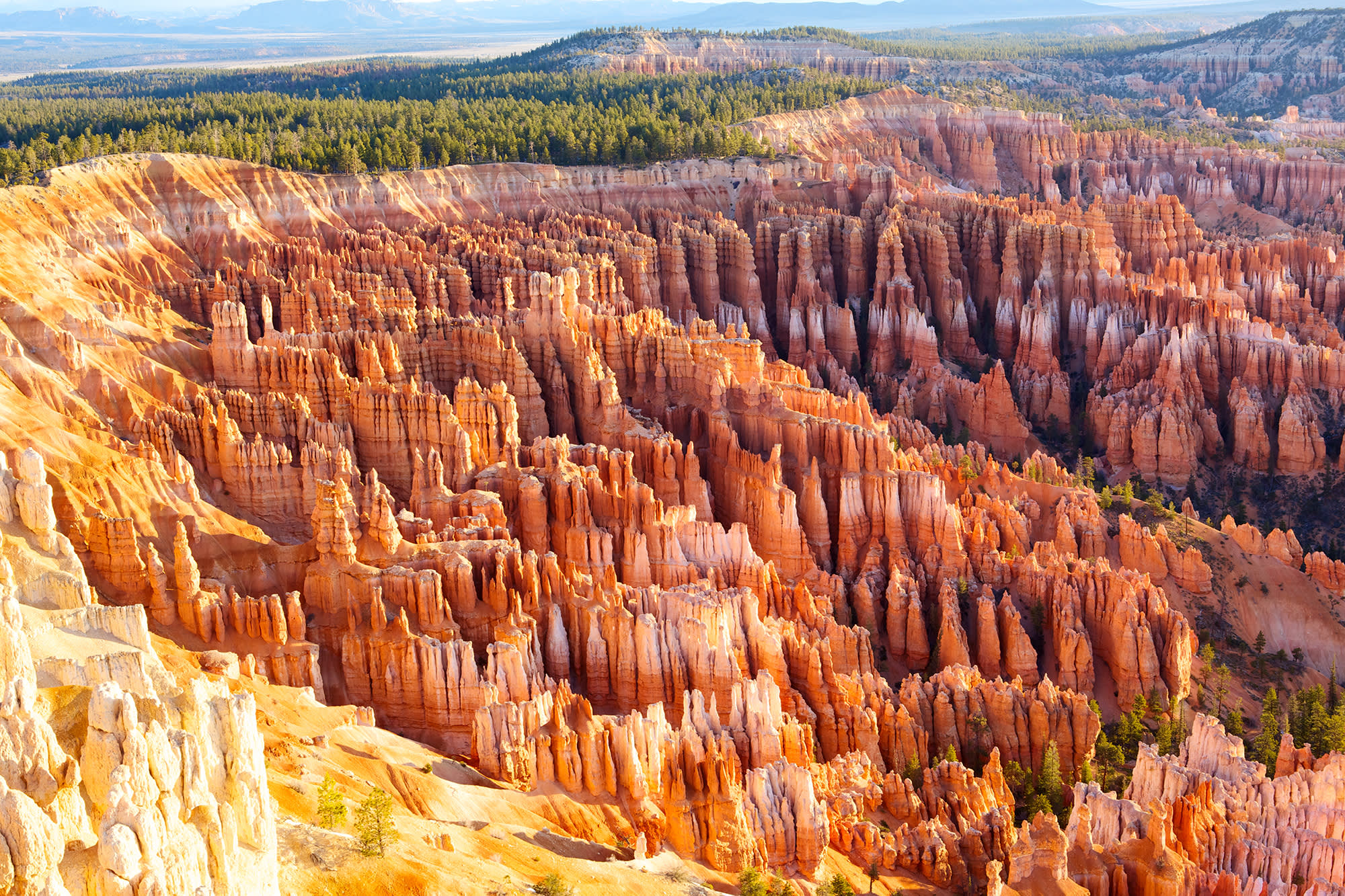
7 Utah Wonders That'll Take Your Breath Away
Utah has no shortage of delightful sights and amazing places, but we’ve got the lowdown on the wondrous wonders and the best time to see them. Sure, Utah’s landscape is always beautiful, but timing is everything if you want to be so serene and stupefied that you stop breathing.
(Asphyxiation is very serious and not something to joke about. Breathing is good. We encourage it. These amazingly beautiful Utah phenoms should elicit a gentle gasp and then a return to normal breath. Namaste.)
1. Bryce Canyon in Winter, at Sunset
Ever heard of Bryce Canyon National Park? Haha that was a joke. Of course you have. You haven't been living under a hoodoo. But have you seen this place in winter? At 9,000 feet, Bryce gets a decent dusting of snowflakes and frost that actually contribute to its unique erosion patterns. The amphitheater is always beautiful, but during sunset the red rock turns orange and the snow turns pink and the sky is purple and the ponderosas are green and the air is clear as quartz. That’s what we call a run-on rainbow.
Bonus: Stick around for the stars to show their stuff. Bryce is famous for its outer darkness and on a clear night the stars sparkle like a black cape bedazzled with diamonds. Which you will be wearing because it will be very, very cold.
2. Delicate Arch at Sunrise
You’ve seen it on license plates, billboards, inspirational posters at your dentist’s office and on your ex-wife’s Instagram feed (#lookatmenow #archyougladwegotdivorced?). Delicate Arch is as ubiquitous as legal separations. Well maybe it’s time to see things in a new light. Broaden your horizons and wake up early to watch the birth of a new day and come to terms with the death of your marriage. It’s difficult to get the arch alone for one-on-one time, as it is a very popular destination, but the break of dawn might afford you little a intimacy to process your feelings with a 10,000-year-old rock hole. Start hiking 90 minutes or so before sun-up in the pre-dawn gloam and watch the sunline creep across Arches National Park. It’s a new beginning.
3. Lake Powell in September
Lake Powell in summer is an extrovert personified: rambunctious parties, loud families, noisy engines, whiny jet skis and great-grandpas gone wild. It’s a frenzy of fun bordering on chaos — and it’s not for everyone. After the fever pitch has died down, and the young people have turned off their devil music, the whole place breathes a sigh of relief. Lake Powell in the fall is calm and quiet and the water is as warm as a puddle of Diet Coke off-gassing in the sun. Air temperatures are a bit cooler but still pleasant for swimming or water-sporting. Introverts flock by ones or twos to enjoy the scenic respite.
Bonus: Lake Powell has a million side canyons to snuggle up to. You can hide from the world in your own personal alcove or take a clothing optional swim (you didn’t hear that from us).
4. Dead Horse Point at Sunset
We aren’t trying to beat a dead horse here, but sunset at Dead Horse Point State Park is truly a sight to see. The overlook was once used as a natural corral by some neglectful cowboys, hence the sad name. From the tip of the plateau you can see the Colorado River living its best life as well as the incredible surface area of Canyonlands National Park. During sunset the desert colors strut about like a collared lizard at a pride parade.
Bonus: Get comfortable on the precipice because this vast, empty desert is another prime stargazing spot. Listen for the whinnies of ghost ponies on the breeze.
5. Observation Point in Autumn
Observation Point sits high on the red rock rim above the Virgin River in Zion National Park. The lookout is wondrous every day of the year, but, in fall, trees lining the canyon bottom convert to bright yellow and red. Add in a little rust and white sandstone, blue sky and sage and you get … brown? (Okay don’t mix the colors together.) This one will leave you breathless — figuratively and literally because this hike is hard.
6. Calf Creek Falls in Early Summer
Calf Creek Waterfall is the premier hike in Escalante country for a good reason. The trail follows Calf Creek amongst cottonwood trees and horsetail reeds, then opens up to a lovely varnished sandstone alcove. Water jumps off the 80-foot cliff like a lemming on a triple dog dare. In May and June the waterfall is particularly robust from spring runoff. Swimming is allowed, if you enjoy cryotherapy.
7) Albion Basin in July
Wanna see Utah’s Bladderpod? How about Cobwebby Goldenbush? Rosy Pussytoes? No? Sheesh! Don’t be such a Hellebore! They’re just wildflowers. Don’t get your Hooded Ladies-tresses in a bunch! We just want you to know that one of the best places to see wildflowers is Albion Basin in Little Cottonwood Canyon. Mid-July is your best bet, give or take a few weeks. And please, watch your step while hiking. You wouldn't want to stomp on Nuttall’s Aster.
Bonus:
Go full-blown Switzerland and take Snowbird’s Aerial Tram to the top of Hidden Peak. While definitely not free (a trip starts around $37) it is a lovely ride through the mountains and the view at the top is truly worthy of fonduing a Toblerone in some Swiss Miss.
We hope you get yourself to the right place at the right time to enjoy the show. And, of course, we hope these seven wonders inspire reverence, a little bit of reflection, and create a meaningful moment in this hectic modern world. And lots of wildflower jokes. Good luck out there, kids.